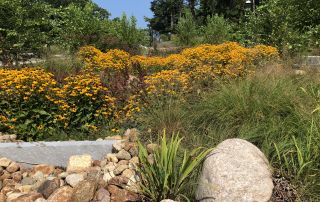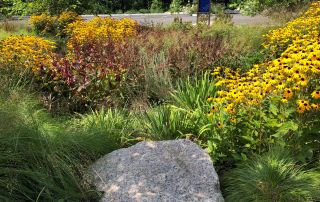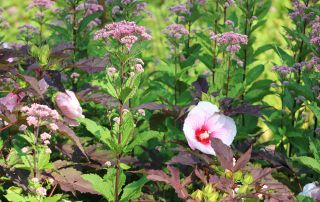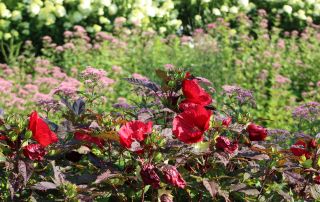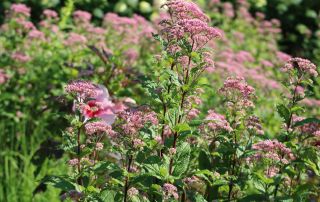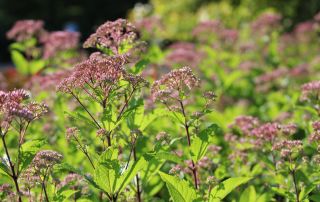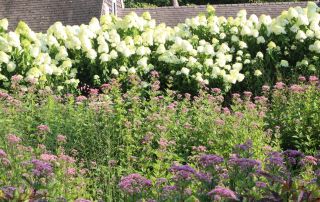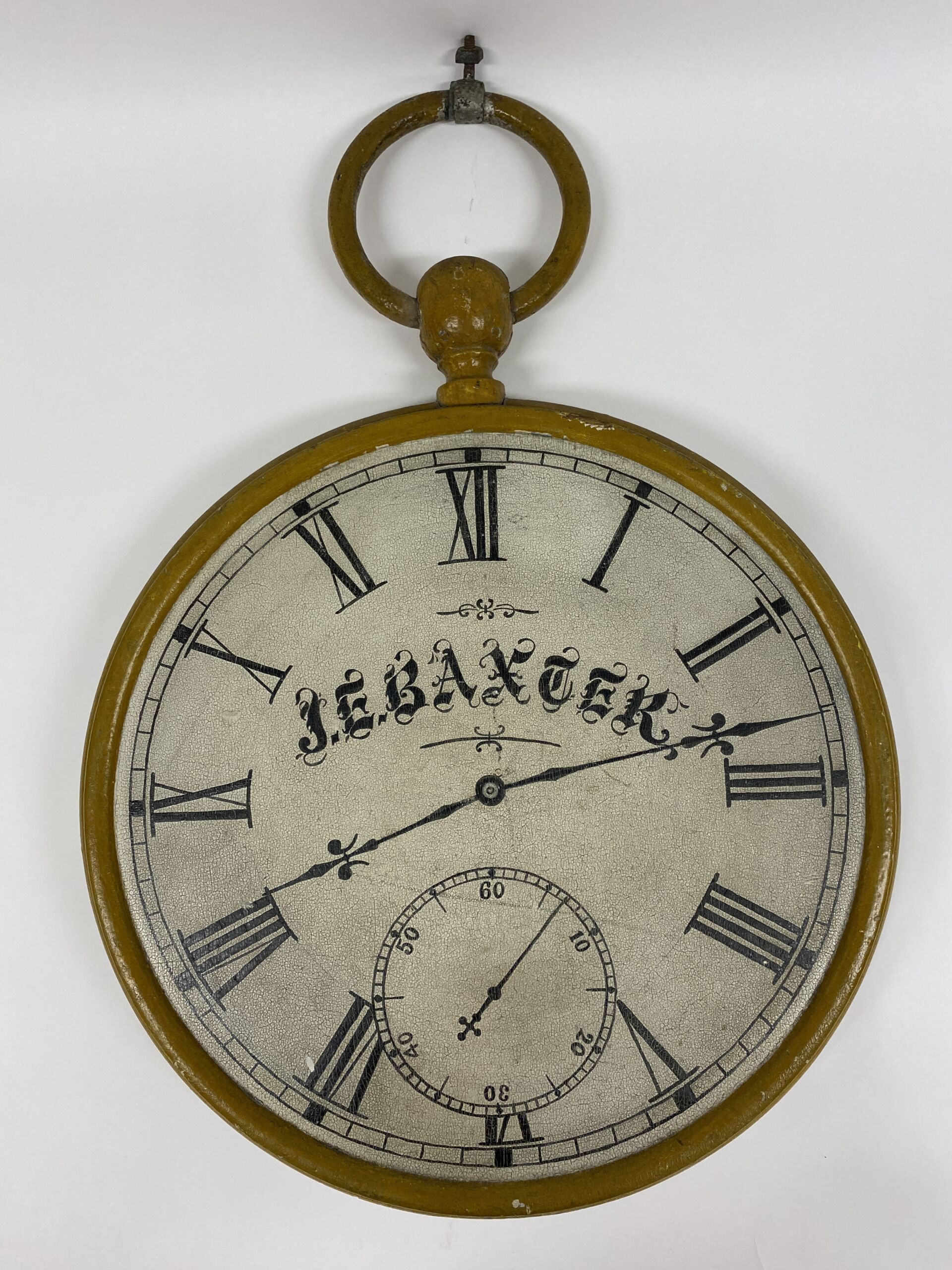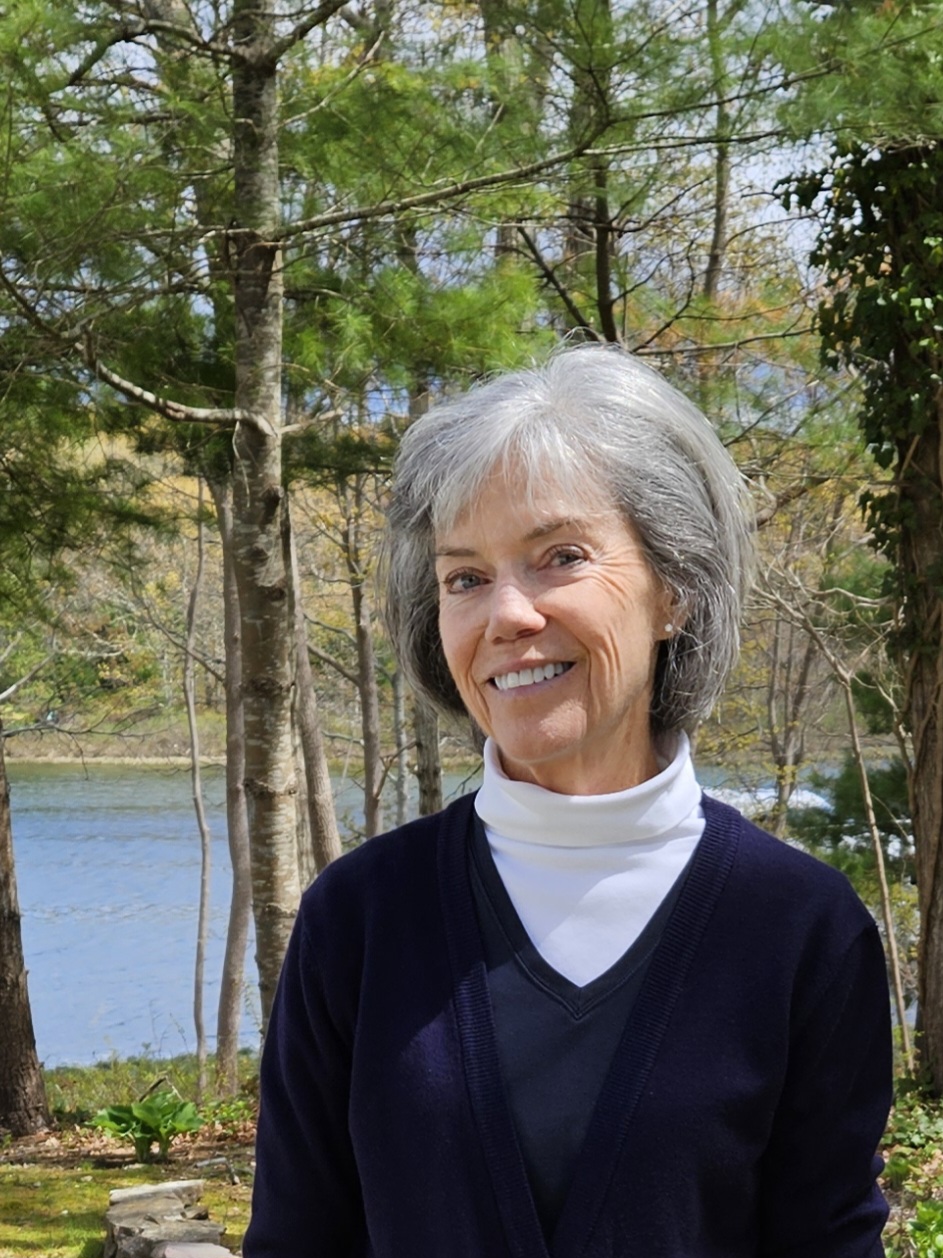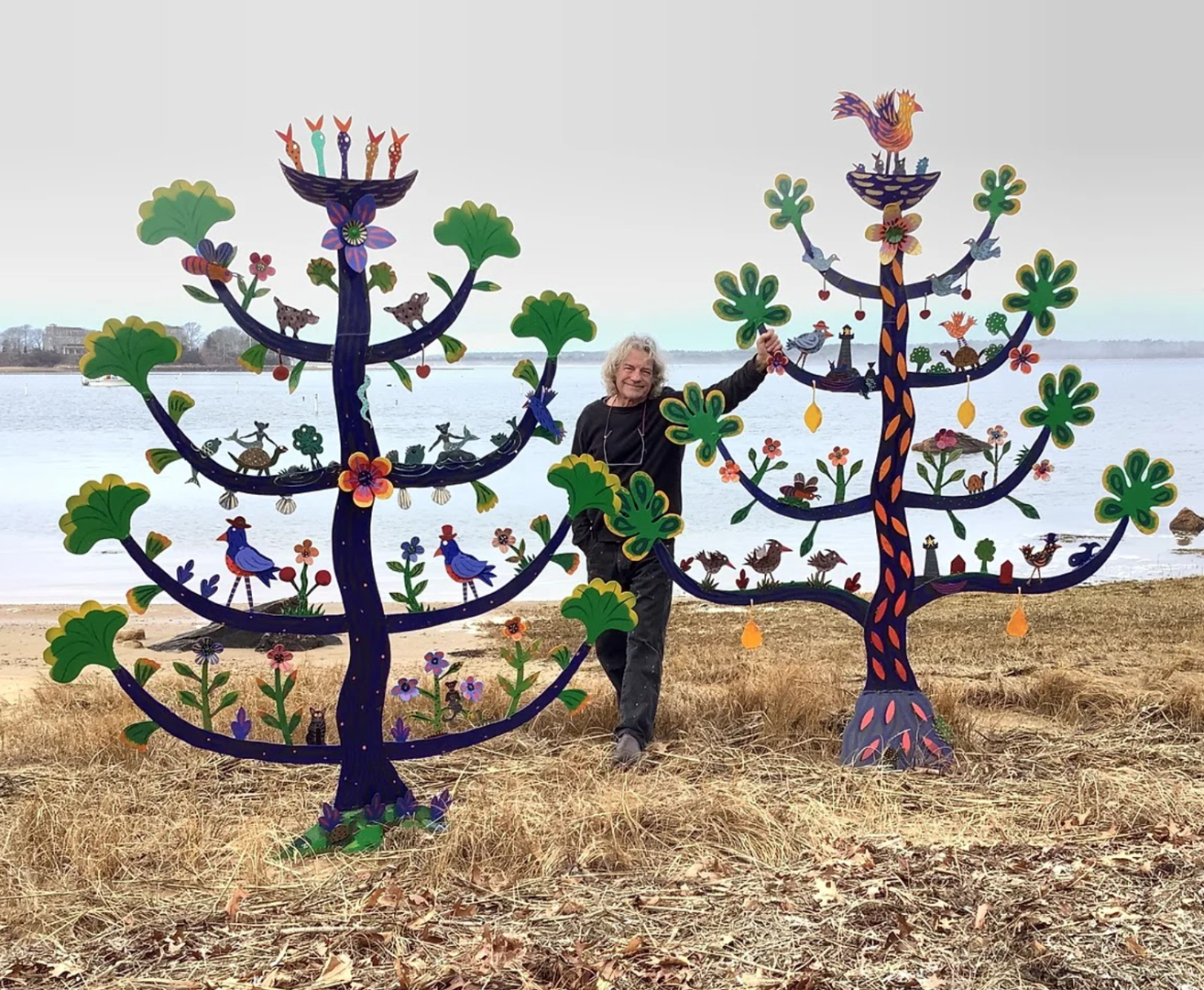Hybrid of Horticulture and Ecology
Plants like communities too. When we built the new parking lot at Heritage Museums & Gardens, the general concept behind the landscape was that of creating a plant community. We chose plants that are (mostly) native to the northeast and grouped them so the effect would be a natural group of plants that could be found growing together in a local meadow. Now that the parking garden has started to mature the effect is stunning.
So what is a plant community in the wild? Generally speaking, a plant community is a group of plants that grow in similar conditions in close proximity to each other. They can be a meadow, a woodland, a wetland or any number of combinations of those or any other natural landscape. A designed plant community is a designed interpretation of a natural environment. In the case of the Parking Garden at Heritage Museums & Gardens, the community is mostly a meadow. Some of the meadow areas are dry (upland) and some are more moist (lowland) and some areas are combinations of both.
In general, these landscapes are an interpretation of a wild community of plants. They’re what we perceive to be a naturally occurring group of plants but, realistically, they are probably quite different from anything naturally occurring. Most of our home gardens are vastly different than they were say 1,000 years ago, or even 200 years ago. We’re trying to create communities of plants that resemble what we see in nature. But ultimately they are quite different from the ecosystems found in nature. Our environment has been dramatically altered by mankind so we must, ultimately, choose plants that are adapted to the new environment and that meet our needs. Those needs may be plants that tolerate the soil conditions, or that meet our height, texture or color range. Many of us try and choose native species but we may ultimately include species from different habitats to supplement a native palette, particularly when an all-native selection is not available.
We create designed interpretations so we can increase the meaning of the plantings and create attractive landscapes. Often this involves using more flowering species to make the landscape more colorful. Also, people tend to like order in a landscape so often we simplify the palette of plants and exaggerate the patterns to make the plantings seem more orderly but less truly natural. We may add a few exotic species (non-native) to add a different dimension to the design. Many designers try and choose only native species when designing a landscape but I argue that doing so limits your palette and can deprive you of many wonderful plants.
Ultimately, designed plant communities are a hybrid of horticulture and ecology. In designing a plant community we try to replicate nature and natural landscapes but we should keep in mind that nature spent thousands (millions) of years evolving and what we create will probably need constant attention. If in the area stop and visit the Parking Garden of Heritage Museums & Gardens and while you’re here, come and see all that is new in the rest of the Garden!


